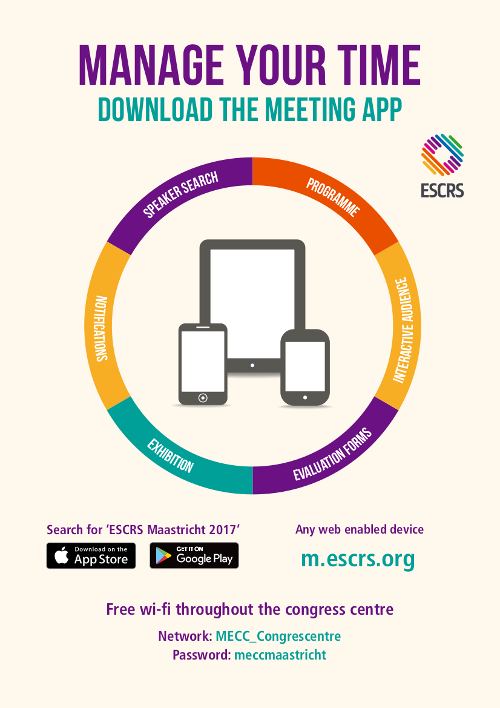Posters
(results will display both Free Papers & Poster)
Customized corneal cross-linking for the treatment of myopic refractive error: 6 month results of a prospective clinical study
Poster Details
First Author: M. Elling GERMANY
Co Author(s): B. Dick
Abstract Details
Purpose:
To evaluate the safety and efficacy of a new method for reduction of myopic refractive error in healthy myopic eyes through the targeted application of high dose, pulsed, accelerated corneal cross-linking in a circular spot pattern.
Setting:
University Eye Hospital Bochum, Germany
Methods:
This 12 month, prospective study included healthy myopic eyes. Patients underwent targeted epi-off, pulsed, accelerated cross-linking over the central 4 mm of the cornea, with dose 10 to 15 J/cm2. Efficacy was determined by mean change in manifest refractive spherical equivalent (MRSE), uncorrected visual acuity (UCVA), and corneal curvature (Kmax, K Flat, and K Steep). Safety was determined by loss of best-corrected visual acuity (BCVA), slit lamp biomicroscopy, endothelial cell count and incidence of adverse events.
Results:
6-month interim analysis included 14 patients (26 eyes; 13 OD) mean age 30.8 ± 9.3 years. Statistically-significant improvement in UCVA was observed at 1, 3 and 6 months postoperative (p<0.001). Significant improvements in mean manifest sphere and mean MRSE were noted at all visits versus baseline (p<0.001). An endothelial cell count performed at 1 month postoperative showed there were no significant changes in cell density (p = 0.282) or number of cells (p = 0.069).
Conclusions:
Customized corneal cross-linking is a promising method for reducing myopic refractive error in healthy eyes without ablation or removal of stromal tissue. This method may be evaluated as an alternative to conventional refractive surgery. Longer follow-up and additional studies are needed to refine treatment parameters and confirm long term stability of the approach.
Financial Disclosure:
None



